- Home
- Alison Weir
Elizabeth of York Page 8
Elizabeth of York Read online
Page 8
After the dancing, Elizabeth was probably with the ladies who accompanied the King and Queen when they paid their guest the honor of conducting him to the apartments that had been made ready for him. When the ladies withdrew so that Gruthuyse could have a bath, Elizabeth was probably sent to bed. The next day, the court returned to Westminster.29
Elizabeth’s baby sister Margaret did not thrive. She died, aged eight months, on December 11, 1472, and was buried in Westminster Abbey in an altar tomb of gray marble “at the altar end before St. Edward’s shrine,” which now stands between the tombs of Edward III and Richard II, having been moved here during the Reformation. The tomb brass and inscription plate have long vanished, but the Latin epitaph read: “Nobility and beauty, grace and tender youth are all hidden here in this chest of death.”30
It was common in those days for children to learn about death at close quarters from an early age. It has been estimated that, even among the aristocracy, one in every five or six children died at birth or within a year.31 There were no antibiotics, and infections that can effectively be treated today could then be lethal. The risks were higher in crowded cities: with their polluted water supplies and accumulation of sewage, they were a breeding ground for diseases such as plague, especially in the summer. This was one of the reasons why royal children were given their own separate establishments in the country, well away from the risk of infection. Despite this precaution, three of Elizabeth’s own children would die young.
The high rate of infant mortality meant that Edward IV’s succession was not secure with just one male heir, so there was cause for rejoicing when the Queen bore a second son, named Richard, on August 17, 1473, at the Dominican Friary in Shrewsbury. This child lived, and was brought up with his sisters. In May 1474 he was created Duke of York, in honor of the grandfather whose name he bore.
Elizabeth was henceforth to see less of the Prince of Wales. In the autumn of 1473 the Queen took him to Ludlow Castle, where he was now to reside as nominal president of a newly created Council of Wales and the Marches. The little boy, now three, had his own household under the governance of his dependable uncle, Anthony Wydeville, Earl Rivers, to whom the King had “entrusted the care and direction” of his heir.32
In May 1474, Edward IV drew up for Rivers specific rules governing the upbringing and education of his son and the management of his household. Actual responsibility for educating the prince was delegated to John Alcock, Bishop of Worcester. Young Edward “was brought up virtuously by virtuous men” and showed himself “remarkably gifted, and very well advanced in learning for his years.”33
Elizabeth Wydeville’s influence was clear from the first. “Everyone as he was nearest of kin unto the Queen, so was planted next about the prince, whereby her blood might of youth be rooted in the prince’s favor.”34 She was a member of young Edward’s council, which was headed by her brother Rivers and their cousin, Sir Richard Haute, and acted only “with the advice and express consent of the Queen.” She also had responsibility for nominating the officers who served her son.35 This domination of the heir and his council by the Wydevilles was intended to secure their continuing power in the next reign,36 but it would in time prove to be fateful for young Edward—and for Elizabeth and his other siblings.
The prince was not isolated from his family at Ludlow. He was often at court, especially at Christmas, so he would never have become a stranger to his sisters.37 However, royal siblings were customarily split asunder, for it was expected that the girls would leave court to marry great princes or lords in pursuance of their father’s policies. In October 1474, under the terms of a treaty signed in Edinburgh, Cecily of York, aged five, was betrothed to the future James IV of Scots, then only two years old,38 “in the interests of peace.” Edward was planning an invasion of France, and did not want Scotland, France’s old ally, to cause trouble, so this betrothal was arranged to preempt that. On December 26 the formal ceremony of betrothal took place in Edinburgh with a proxy standing in for Cecily, and from this time she was styled “the Princess of Scots.”
Elizabeth’s destiny seemed settled when she was eleven and the King arranged a most prestigious marriage for her. That summer, having invaded France and determined to conquer it, he found himself abandoned by his allies, Charles, Duke of Burgundy, and Francis II, Duke of Brittany, and settled instead for coming to terms with Louis XI, who had dangled the carrot of a lavish pension. On August 29, 1475, the two kings met on a bridge at Picquigny and parleyed through a wooden trellis. The result was the Treaty of Picquigny, which sealed a peace between England and France. One of the conditions of the treaty was that “for the inviolate observation of the friendship,” a marriage should be contracted between “the most serene Lady Elizabeth” and Louis’s son, the “most illustrious” Dauphin Charles, “when they shall reach marriageable years.” Another condition was that Edward would surrender to the Dauphin his claim to the duchy of Aquitaine, which had been lost during the Hundred Years War, and that it should be considered part of Elizabeth’s dower. After her marriage the French King would settle upon her rents to the annual value of £60,000 [£30 million] for her maintenance in a manner befitting the future Queen of France. This was fifteen times the dower settled on Elizabeth Wydeville, so the princess could look forward to a life of luxury. If she were to die before the wedding, her sister Mary was to take her place.39
It was agreed that Elizabeth would go to France when she was twelve. Child marriages were made per verba de futoro—as a promise for the future—and it was anticipated that they would be consummated when the couple reached the age of consent, which was twelve for girls and fourteen for boys (unless the contract stipulated they should be older). These were also the respective minimum ages at which the Church sanctioned marital relations. Most royal and aristocratic girls of the period married between the ages of thirteen and sixteen—snapped up because of the advantages and status they would bring their husbands.
“Both the kings laid one of their hands upon the book, and both of them swore religiously that the marriage between their children should be consummated, as was stipulated by the treaty.”40 Successfully negotiating this marriage was something of an achievement for Edward, for no English princess had ever become the bride of a King of France. This was the third time that Elizabeth had been offered in marriage as a means of resolving a conflict with one of her father’s enemies.
Her future husband was five years old, and four years her junior. He was King Louis’s only surviving son; his godfather had been Edward of Lancaster, Prince of Wales. The Dauphin lived at the chateau of Amboise, far from his father’s court, for his health, unlike that of his future bride, was poor. Although he had a pleasant disposition, he was stunted in height, feeble in body and mind, and many thought him too foolish to make a good king.
From the time of her betrothal, Elizabeth was addressed as “Madame la Dauphine” and treated with the honors due to a future Queen of France.41 Edward apportioned part of the hefty pension paid to him by King Louis for her maintenance as Dauphine, and rich gowns in the French fashion were made for her. She was probably told to work harder at her French lessons. Commines says that the King and Queen were deeply committed to this marriage, and that Elizabeth Wydeville’s pride was so inflated at the prospect of her daughter becoming Queen of France that she repeatedly inquired of King Louis to know when she should send him “her Dauphiness.”42
Elizabeth had been brought up to know what was expected of her. She was probably familiar with Jacobus de Cessolis’s The Game and Play of Chess, published by Caxton in 1474 and dedicated to her uncle Clarence, and its description of the qualities expected of a queen: “A queen ought to be chaste, wise of honest people, well mannered, and not curious [anxious, odd] in nourishing of her children. Her wisdom ought not only to appear in feat and works, but also in speaking: that is, to wit, that she be secret and tell not such things as ought to be holden secret. Amongst all, she ought to be timorous and shamefast.” These were l
essons Elizabeth learned well.
Another princess, Anne, was born to the Queen on November 2, 1475, at Westminster.43 She was baptized in Westminster Abbey and given into the care of a nurse, Agnes Butler.44 Elizabeth’s lady mistress, Lady Berners, died on December 18.45
In July 1476 the King took his family to Fotheringhay in Northamptonshire. The Norman castle there had been granted by Edward III to his fifth son, Edmund of Langley, first Duke of York, in 1377. Edmund had endowed the college and church of St. Mary and All Saints, and for the next century and more Fotheringhay was one of the chief seats of the House of York. Edmund’s son, Edward of Aumale, Duke of York, had built the choir of the now vanished church in which he would later be buried, which he intended as a mausoleum for his family. In the early 1430s a parish church was built onto the collegiate church. The latter and the college buildings were demolished in 1553 during the Reformation, and the large parish church is what remains today, along with some unexcavated humps and hollows where the college quadrangle once stood. The Yorkist badge of the falcon and fetterlock can still be seen in the church, and the painted pulpit was probably a gift from Edward IV.
Elizabeth’s younger uncle, Gloucester, had been born in Fotheringhay Castle in 1452. Edward IV greatly loved Fotheringhay, which was his favorite residence outside London. He had enlarged the castle, and in building “very fair lodgings” for himself and his queen—including galleries, privies, turrets, and a new kitchen—had created a palace “fair and meetly strong” with a double moat and a towering gatehouse.46
The royal family had returned to Fotheringhay to give their dead fitting burial. Elizabeth and Mary, the eldest, were probably the two unnamed daughters of the King who, clad in deep mourning—possibly of blue, the color of royal mourning, like that worn by their mother—were present at the somber ceremonies on July 29–30, when the bodies of their grandfather, the Duke of York, and their uncle, the Earl of Rutland, were brought from their humble resting place in the church of the Mendicant friars at Pontefract47 and reinterred with all due honors in the collegiate church at Fotheringhay. Elizabeth had never known them, for they were killed at Wakefield in 1460.48
On July 29, Elizabeth and her sister stood at the entrance to the churchyard, waiting to receive the cortege with their parents, the Duke of Clarence, the Marquess of Dorset, Earl Rivers, Lord Hastings, and other noblemen. An effigy of the late Duke of York, “garbed in an ermine furred mantle and cap of maintenance, covered with a cloth of gold,” lay on his coffin on a bier blazing with candles and guarded by an angel of silver bearing a crown of gold, to signify that he had been the rightful King of England. York’s youngest son, Richard of Gloucester, with other lords and officers of arms, all in black, followed the funeral chariot, which was drawn by six horses, wearing caparisons of black charged with the arms of France and England.
When the procession drew to a standstill, the King made an obeisance to his father’s coffin “right humbly and put his hand on the body and kissed it, crying all the time.” Then the processions of prelates and peers advanced into the church, where two hearses were waiting, one in the choir for the body of the duke and one in the Lady Chapel for that of the Earl of Rutland. The King retired to his “closet” while his brothers and the officers of arms stationed themselves around the hearses. Masses were sung and the King’s chamberlain, on his behalf, laid seven palls of cloth of gold “in a cross on the body.”
The next day, three funeral masses were celebrated. After their parents, the princesses bowed to the catafalques and offered Mass pennies at the altar rail, as did Margaret Beaufort, Countess of Richmond. Then the bodies of York and Rutland were interred in the church, where tombs were later built to their memory.49 After the committals, Elizabeth helped the King and Queen distribute alms among the five thousand people who had gathered at the church. It was said that twenty thousand were present at the feast that followed, which was served partly in the castle and partly in the King’s tents and pavilions.
Among the dishes were capons, cygnets, herons, and rabbits; the bill came to at least £300 [£151,400].
After concluding the treaty with Louis XI, Edward IV had sent an embassy laden with gold to Francis II, Duke of Brittany, asking him to send Henry Tudor back to England, in order to arrange a marriage for Henry that would unite the rival houses of York and Lancaster. This implied that one of the King’s younger daughters would be the intended bride. In fact Edward’s real purpose was to snare “the only imp now left of Henry VI’s brood” into his clutches.50 In November 1476, Margaret Beaufort, guessing that this was a ruse to lure Henry back to England, and terrified lest he be abducted and killed, warned him not to return in the event of such a marriage being proposed for him.51 Henry feigned illness, and Duke Francis, divining a plot, committed his guest to sanctuary in a church in St. Malo.
Edward knew himself beaten, and for the rest of his life he paid Duke Francis to keep the exile in Brittany. The young man was treated “reasonably well,” but he “lived the life of a prisoner.”52 Very little is known about this period of Henry Tudor’s life, but he may have spent some of his enforced leisure imbuing himself with the Celtic culture of the duchy, which was similar to that of the Wales of his youth, and embracing the legends of King Arthur, set here in the forest of Broceliande, and of Tristan and Yseult.
In the winter of 1476, Edward IV opened negotiations for the marriage of his heir, the Prince of Wales, to the Infanta Isabella, eldest daughter of the Spanish sovereigns, Ferdinand, King of Aragon, and Isabella, Queen of Castile, whose marriage had unified Spain, and both of whom were highly regarded in Europe. It was two years before these negotiations foundered, and ultimately it would be the Infanta’s youngest sister who married Elizabeth of York’s eldest son. A daughter of the Holy Roman Emperor, Frederick III of Habsburg, was then sought for young Edward, but “the chief difficulty” in regard to arranging a marriage for him was proving to be “the great quantity of money which the King of England will want.”53
It was perhaps in March 1477 that Queen Elizabeth gave birth to a third son, George.54 Joan, Baroness Dacre, wife of the Queen’s chamberlain, was appointed his nurse.55 In 1478, George was designated Duke of Bedford, the title of which the hapless George Neville, Elizabeth’s former betrothed, had been deprived early that year, although there is no record of any formal creation.
In 1477 eleven-year-old Elizabeth, her mother the Queen, and her aunt, Elizabeth Plantagenet, Duchess of Suffolk, were all made Ladies of the Order of the Garter, and participated in the traditional three-day celebration. Elizabeth no doubt thrilled to see her father the King and his Knights Companions “all mounted on horseback in their habits of blue,” and on the “Grand Day,” St. George’s Day itself, she and her aunt rode with her mother and a company of ladies to the chapel to hear Mass, all wearing a “livery of murrey [mulberry red] embroidered with garters.”56 Stalls were not allocated to Ladies of the Garter, so the royal women watched the service from the rood loft. Afterward, Elizabeth was present at the annual garter feast in St. George’s Hall, Windsor, presided over by Edward IV, who was enthroned in solitary state at the high table. Entering with her mother and the other ladies as the second course was borne in, Elizabeth ascended with them to the gallery at the west end of the hall and observed the proceedings from there.57
The outward displays of unity by the Yorkist family masked divisions that would soon tear it asunder. Early in 1477, Charles the Bold, Duke of Burgundy, had been killed at the Battle of Nancy, leaving his duchy in the hands of his only legitimate child, Mary of Burgundy. The dukes of Burgundy were descended from Charles V of France, but they had constantly striven for independence from the French crown. Now Louis XI promptly declared the duchy extinct on the grounds that it properly belonged to France.
Charles the Bold’s widow, Margaret of York, now schemed to marry her stepdaughter Mary to her brother George, Duke of Clarence, whom she loved more than any other member of her family; and naturally Clarence leapt at the
idea, for if he married Mary, he would gain a great European fiefdom. However, such a scheme would seriously have prejudiced England’s alliance with France, Burgundy’s enemy, and Elizabeth’s marriage plans. It would also have given the untrustworthy, treacherous Clarence a rival power base on the Continent, with all the riches of Burgundy at his disposal as well as control over the North Sea coast; these resources could have enabled him to challenge his brother’s title to the English throne. Evidently this was what Edward IV feared, not least because a case—admittedly weak—could be made for Mary of Burgundy to claim the English throne, since she was descended from John of Gaunt. But the ambitious and headstrong Clarence was unlikely to bother with legal niceties.
Edward “threw all possible impediments in the way,”58 but fortunately for him, Clarence’s schemes were immediately thwarted when Louis XI invaded the duchy and seized Burgundy “proper” (roughly the area now known as Burgundy today), Flanders, Artois, and Picardy. Edward no more wanted Louis ruling Burgundy than he did Clarence, but he was anxious to maintain the alliance with France, so he reminded Louis of the treaty of amity between them, reiterating his desire for the marriage of Princess Elizabeth to the Dauphin. But Louis failed to respond with enthusiasm; he was suspicious of Edward’s motives, and proposed that the Dauphin be wed to Mary of Burgundy instead, to which Edward retaliated by offering her Anthony Wydeville, Earl Rivers, as a husband. This kind of diplomatic maneuvering was common, even after marriage alliances had been concluded. Nothing was set in stone, and treaties could be broken or ignored if a more advantageous alliance presented itself. Elizabeth’s future was by no means certain.

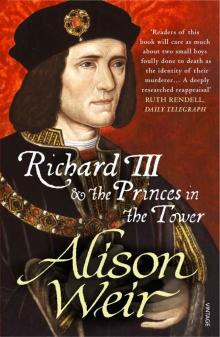 Richard III and the Princes in the Tower
Richard III and the Princes in the Tower Britain's Royal Families: The Complete Genealogy
Britain's Royal Families: The Complete Genealogy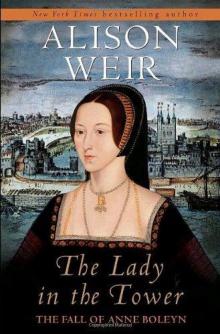 The Lady in the Tower: The Fall of Anne Boleyn
The Lady in the Tower: The Fall of Anne Boleyn Six Wives of Henry VIII
Six Wives of Henry VIII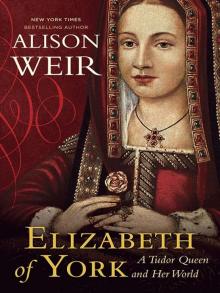 Elizabeth of York: A Tudor Queen and Her World
Elizabeth of York: A Tudor Queen and Her World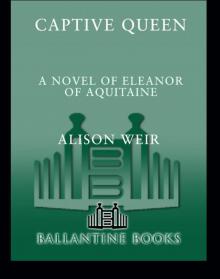 Captive Queen
Captive Queen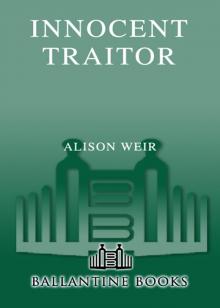 Innocent Traitor
Innocent Traitor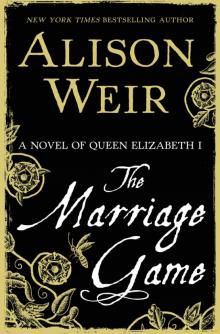 The Marriage Game
The Marriage Game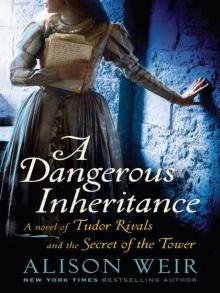 A Dangerous Inheritance
A Dangerous Inheritance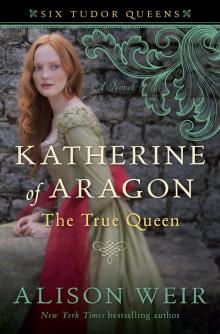 Katherine of Aragón: The True Queen
Katherine of Aragón: The True Queen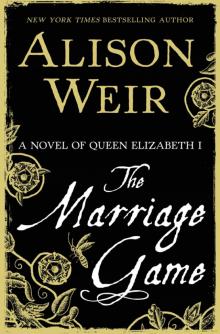 The Marriage Game: A Novel of Queen Elizabeth I
The Marriage Game: A Novel of Queen Elizabeth I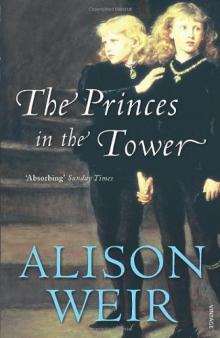 Princes in the Tower
Princes in the Tower Anne Boleyn: A King's Obsession
Anne Boleyn: A King's Obsession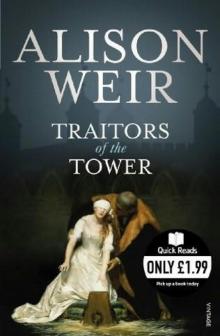 Traitors of the Tower
Traitors of the Tower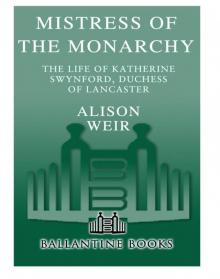 Mistress of the Monarchy: The Life of Katherine Swynford, Duchess of Lancaster
Mistress of the Monarchy: The Life of Katherine Swynford, Duchess of Lancaster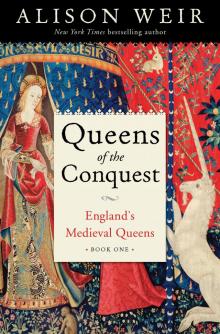 Queens of the Conquest: England’s Medieval Queens
Queens of the Conquest: England’s Medieval Queens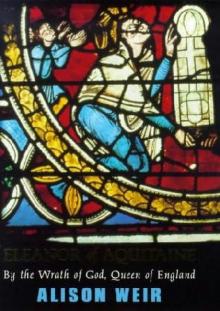 Eleanor of Aquitaine: A Life
Eleanor of Aquitaine: A Life Mary, Queen of Scots, and the Murder of Lord Darnley
Mary, Queen of Scots, and the Murder of Lord Darnley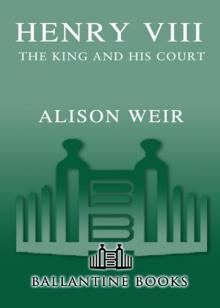 Henry VIII: The King and His Court
Henry VIII: The King and His Court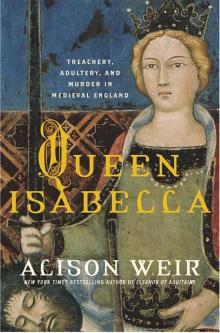 Queen Isabella: Treachery, Adultery, and Murder in Medieval England
Queen Isabella: Treachery, Adultery, and Murder in Medieval England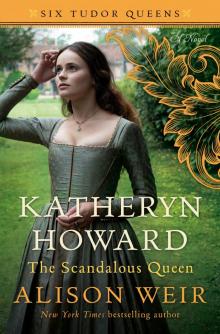 Katheryn Howard, the Scandalous Queen
Katheryn Howard, the Scandalous Queen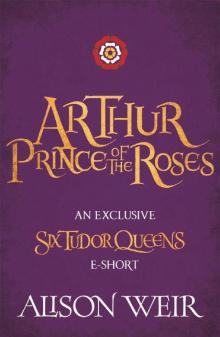 Arthur- Prince of the Roses
Arthur- Prince of the Roses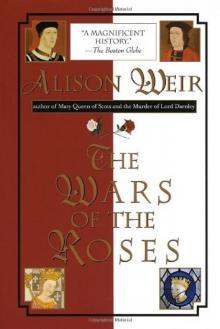 The Wars of the Roses
The Wars of the Roses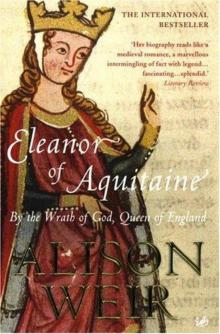 Eleanor of Aquitaine: By the Wrath of God, Queen of England
Eleanor of Aquitaine: By the Wrath of God, Queen of England Mary Boleyn: The Great and Infamous Whore
Mary Boleyn: The Great and Infamous Whore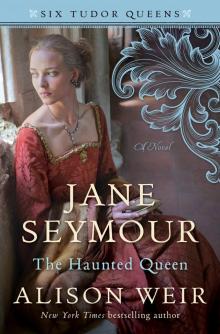 Jane Seymour: The Haunted Queen
Jane Seymour: The Haunted Queen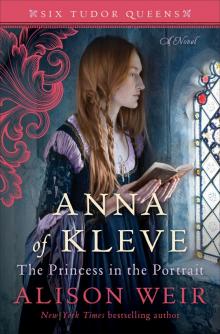 Anna of Kleve, the Princess in the Portrait
Anna of Kleve, the Princess in the Portrait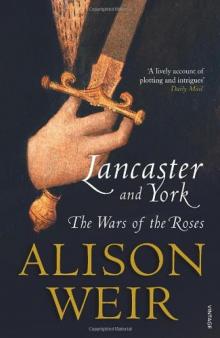 Lancaster and York: The Wars of the Roses
Lancaster and York: The Wars of the Roses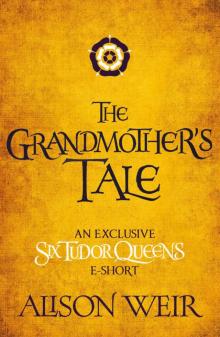 The Grandmother's Tale
The Grandmother's Tale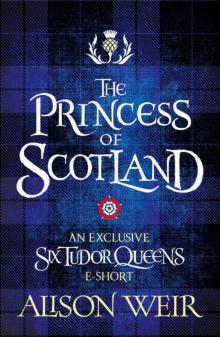 The Princess of Scotland (Six Tudor Queens #5.5)
The Princess of Scotland (Six Tudor Queens #5.5)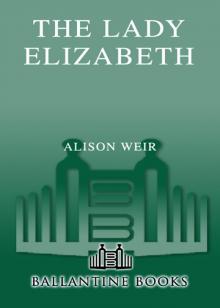 The Lady Elizabeth
The Lady Elizabeth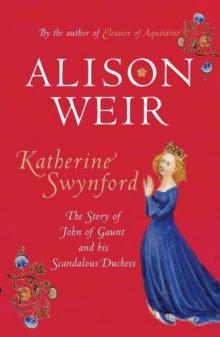 Katherine Swynford: The Story of John of Gaunt and His Scandalous Duchess
Katherine Swynford: The Story of John of Gaunt and His Scandalous Duchess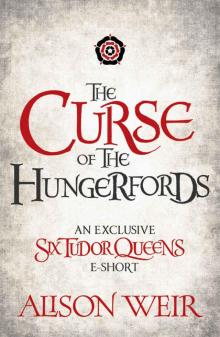 The Curse of the Hungerfords
The Curse of the Hungerfords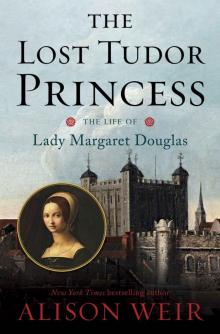 The Lost Tudor Princess: The Life of Lady Margaret Douglas
The Lost Tudor Princess: The Life of Lady Margaret Douglas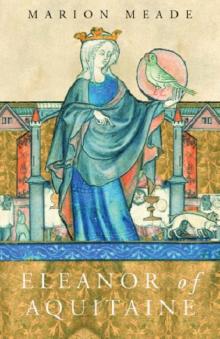 Eleanor of Aquitaine
Eleanor of Aquitaine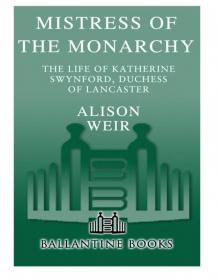 Mistress of the Monarchy
Mistress of the Monarchy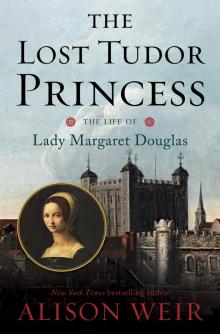 The Lost Tudor Princess
The Lost Tudor Princess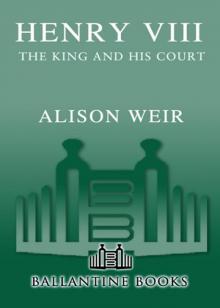 Henry VIII
Henry VIII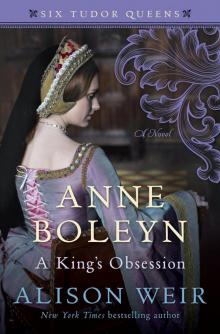 Anne Boleyn, a King's Obsession
Anne Boleyn, a King's Obsession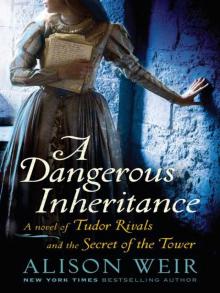 A Dangerous Inheritance: A Novel of Tudor Rivals and the Secret of the Tower
A Dangerous Inheritance: A Novel of Tudor Rivals and the Secret of the Tower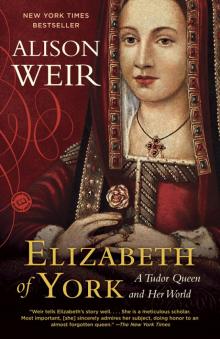 Elizabeth of York
Elizabeth of York Katherine of Aragon, the True Queen
Katherine of Aragon, the True Queen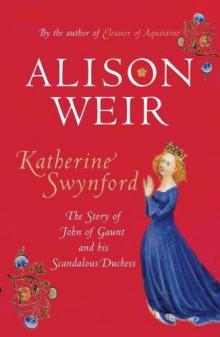 Katherine Swynford
Katherine Swynford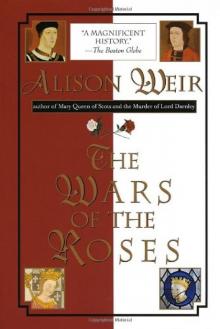 Wars of the Roses
Wars of the Roses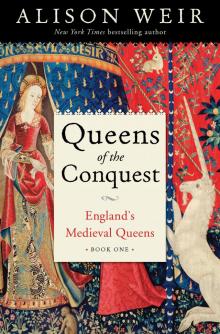 Queens of the Conquest
Queens of the Conquest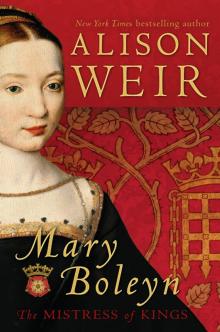 Mary Boleyn
Mary Boleyn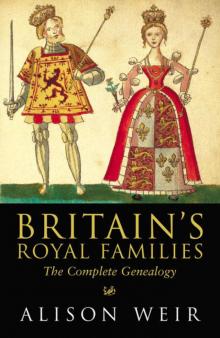 Britain's Royal Families
Britain's Royal Families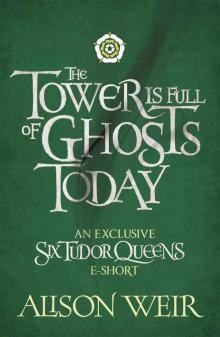 The Tower Is Full of Ghosts Today
The Tower Is Full of Ghosts Today Life of Elizabeth I
Life of Elizabeth I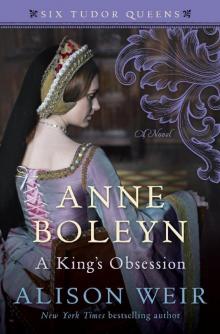 Anne Boleyn A King's Obssession
Anne Boleyn A King's Obssession Lancaster and York
Lancaster and York Jane Seymour, the Haunted Queen
Jane Seymour, the Haunted Queen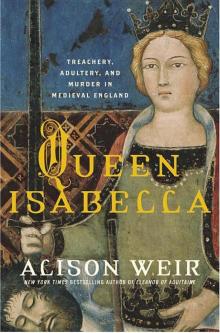 Queen Isabella
Queen Isabella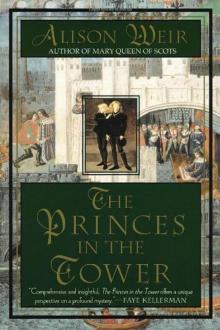 The princes in the tower
The princes in the tower